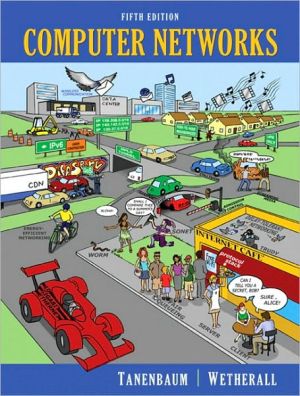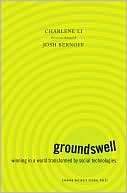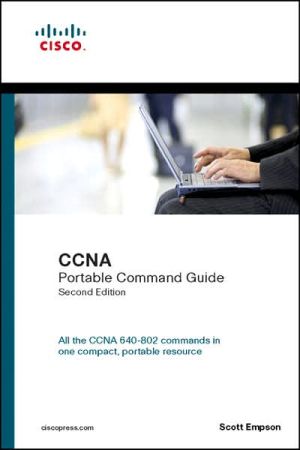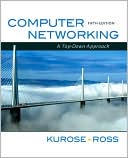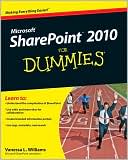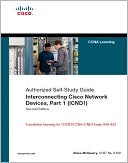Computer Networks
A contemporary, yet classic, introduction to today's key networking technologies\ Computer Networks, Fifth Edition, is the ideal introduction to the networking field. This bestseller reflects the latest networking technologies with a special emphasis on wireless networking, including 802.11, 802.16, Bluetooth™, and 3G cellular, paired with fixed-network coverage of ADSL, Internet over cable, gigabit Ethernet, MLPS, and peer-to-peer networks. Notably, this latest edition incorporates new...
Search in google:
Computer Networks, 5/e is appropriate for Computer Networking or Introduction to Networking courses at both the undergraduate and graduate level in Computer Science, Electrical Engineering, CIS, MIS, and Business Departments.Tanenbaum takes a structured approach to explaining how networks work from the inside out. He starts with an explanation of the physical layer of networking, computer hardware and transmission systems; then works his way up to network applications. Tanenbaum's in-depth application coverage includes email; the domain name system; the World Wide Web (both client- and server-side); and multimedia (including voice over IP, Internet radio video on demand, video conferencing, and streaming media. Each chapter follows a consistent approach: Tanenbaum presents key principles, then illustrates them utilizing real-world example networks that run through the entire book—the Internet, and wireless networks, including Wireless LANs, broadband wireless and Bluetooth. The Fifth Edition includes a chapter devoted exclusively to network security. The textbook is supplemented by a Solutions Manual, as well as a Website containing PowerPoint slides, art in various forms, and other tools for instruction, including a protocol simulator whereby students can develop and test their own network protocols. Booknews A textbook providing a clear explanation of the way networks work, from hardware technology up through the most popular network applications. Topics covered include the physical layer (copper, fiber, radio, and satellite communication); the data link layer (protocol principles, HDLC, SLIP, and PPP); the MAC sublayer (IEEE 802 LANs, bridges, new high-speed LANs); the network layer (routing, congestion control, internetworking, IPv6); the transport layer (transport protocol principles, TCP, network performance); and the application layer (cryptography, email, news, the Web, Java, and multimedia). Annotation c. Book News, Inc., Portland, OR (booknews.com)
CHAPTER 1 INTRODUCTION1.1 USES OF COMPUTER NETWORKS1.1.1 Business Applications1.1.2 Home Applications1.1.3 Mobile Users1.1.4 Social Issues1.2 NETWORK HARDWARE1.2.1 Personal Area Networks1.2.2 Local Area Networks1.2.3 Metropolitan Area Networks+1.2.4 Wide Area Networks1.2.5 Internetworks1.3 NETWORK SOFTWARE1.3.1 Protocol Hierarchies1.3.2 Design Issues for the Layers1.3.3 Connection-Oriented Versus Connectionless Service1.3.4 Service Primitives1.3.5 The Relationship of Services to Protocols1.4 REFERENCE MODELS1.4.1 The OSI Reference Model1.4.2 The TCP/IP Reference Model1.4.3 The Model Used in this Book**1.4.4 A Comparison of the OSI and TCP/IP Reference Models**1.4.5 A Critique of the OSI Model and Protocols**1.4.6 A Critique of the TCP/IP Reference Model1.5 EXAMPLE NETWORKS+1.5.1 The Internet+**1.5.2 Third-Generation Mobile Phone Networks+**1.5.3 Wireless LANs: 802.11++**1.5.4 RFID and Sensor Networks**1.6 NETWORK STANDARDIZATION**1.6.1 Who's Who in the Telecommunications World**1.6.2 Who's Who in the International Standards World**1.6.3 Who's Who in the Internet Standards World1.7 METRIC UNITS1.8 OUTLINE OF THE REST OF THE BOOK1.9 SUMMARYCHAPTER 2 THE PHYSICAL LAYER2.1 THE THEORETICAL BASIS FOR DATA COMMUNICATION2.1.1 Fourier Analysis2.1.2 Bandwidth-Limited Signals2.1.3 The Maximum Data Rate of a Channel2.2 GUIDED TRANSMISSION MEDIA2.2.1 Magnetic Media2.2.2 Twisted Pairs2.2.3 Coaxial Cable++2.2.4 Power Lines2.2.5 Fiber Optics2.3 WIRELESS TRANSMISSION+2.3.1 The Electromagnetic Spectrum2.3.2 Radio Transmission+2.3.3 Microwave Transmission+**2.3.4 Infrared Transmission+**2.3.5 Light Transmission**2.4 COMMUNICATION SATELLITES**2.4.1 Geostationary Satellites**2.4.2 Medium-Earth Orbit Satellites**2.4.3 Low-Earth Orbit Satellites**2.4.4 Satellites Versus Fiber2.5 DIGITAL MODULATION AND MULTIPLEXING++2.5.1 Baseband Transmission++2.5.2 Passband Transmission+2.5.3 Frequency Division Multiplexing2.5.4 Time Division Multiplexing+2.5.5 Code Division Multiplexing2.6 THE PUBLIC SWITCHED TELEPHONE NETWORK2.6.1 Structure of the Telephone System2.6.2 The Politics of Telephones+2.6.3 The Local Loop: Modems, ADSL, and Fiber2.6.4 Trunks and Multiplexing2.6.5 Switching**2.7 THE MOBILE TELEPHONE SYSTEM**2.7.1 First-Generation (1G) Mobile Phones: Analog Voice**2.7.2 Second-Generation (2G) Mobile Phones: Digital Voice+**2.7.3 Third-Generation (3G) Mobile Phones: Digital Voice and Data**2.8 CABLE TELEVISION**2.8.1 Community Antenna Television**2.8.2 Internet over Cable**2.8.3 Spectrum Allocation**2.8.4 Cable Modems**2.8.5 ADSL Versus Cable2.9 SUMMARYCHAPTER 3 THE DATA LINK LAYER3.1 DATA LINK LAYER DESIGN ISSUES3.1.1 Services Provided to the Network Layer3.1.2 Framing3.1.3 Error Control3.1.4 Flow Control+3.2 ERROR DETECTION AND CORRECTION+3.2.1 Error-Correcting Codes+3.2.2 Error-Detecting Codes3.3 ELEMENTARY DATA LINK PROTOCOLS3.3.1 A Utopian Simplex Protocol3.3.2 A Simplex Stop-and-Wait Protocol for an Error-Free Channel3.3.3 A Simplex Stop-and-Wait Protocol for a Noisy Channel3.4 SLIDING WINDOW PROTOCOLS3.4.1 A One-Bit Sliding Window Protocol3.4.2 A Protocol Using Go-Back-N3.4.3 A Protocol Using Selective Repeat3.5 EXAMPLE DATA LINK PROTOCOLS++3.5.1 Packet over SONET++3.5.2 ADSL (Asymmetric Digital Subscriber Loop)3.6 SUMMARYCHAPTER 4 THE MEDIUM ACCESS CONTROL SUBLAYER4.1 THE CHANNEL ALLOCATION PROBLEM4.1.1 Static Channel Allocation4.1.2 Assumptions for Dynamic Channel Allocation4.2 MULTIPLE ACCESS PROTOCOLS4.2.1 ALOHA4.2.2 Carrier Sense Multiple Access Protocols+4.2.3 Collision-Free Protocols4.2.4 Limited-Contention Protocols4.2.5 Wireless LAN Protocols4.3 ETHERNET4.3.1 Classic Ethernet Physical Layer4.3.2 Classic Ethernet MAC Sublayer Protocol4.3.3 Ethernet Performance4.3.4 Switched Ethernet4.3.5 Fast Ethernet+4.3.6 Gigabit Ethernet+4.3.7 10 Gigabit Ethernet4.3.8 Retrospective on Ethernet4.4 WIRELESS LANS4.4.1 The 802.11 Architecture and Protocol Stack+4.4.2 The 802.11 Physical Layer+4.4.3 The 802.11 MAC Sublayer Protocol4.4.4 The 802.11 Frame Structure4.4.5 Services+**4.5 BROADBAND WIRELESS+**4.5.1 Comparison of 802.16 with 802.11 and 3G+**4.5.2 The 802.16 Architecture and Protocol Stack+**4.5.3 The 802.16 Physical Layer+**4.5.4 The 802.16 MAC Sublayer Protocol+**4.5.5 The 802.16 Frame Structure**4.6 BLUETOOTH**4.6.1 Bluetooth Architecture**4.6.2 Bluetooth Applications**4.6.3 The Bluetooth Protocol Stack**4.6.4 The Bluetooth Radio Layer**4.6.5 The Bluetooth Link Layers**4.6.6 The Bluetooth Frame Structure++**4.7 RFID++**4.7.1 EPC Gen 2 Architecture++**4.7.2 EPC Gen 2 Physical Layer++**4.7.3 EPC Gen 2 Tag Identification Layer++**4.7.4 Tag Identification Message Formats4.8 DATA LINK LAYER SWITCHING4.8.1 Uses of Bridges+4.8.2 Learning Bridges+4.8.3 Spanning Tree Bridges4.8.4 Repeaters, Hubs, Bridges, Switches, Routers, and Gateways+4.8.5 Virtual LANs4.9 SUMMARYCHAPTER 5 THE NETWORK LAYER5.1 NETWORK LAYER DESIGN ISSUES5.1.1 Store-and-Forward Packet Switching5.1.2 Services Provided to the Transport Layer5.1.3 Implementation of Connectionless Service5.1.4 Implementation of Connection-Oriented Service5.1.5 Comparison of Virtual-Circuit and Datagram Networks5.2 ROUTING ALGORITHMS5.2.1 The Optimality Principle5.2.2 Shortest Path Algorithm5.2.3 Flooding5.2.4 Distance Vector Routing5.2.5 Link State Routing5.2.6 Hierarchical Routing5.2.7 Broadcast Routing+5.2.8 Multicast Routing++**5.2.9 Anycast Routing5.2.10 Routing for Mobile Hosts**5.2.11 Routing in Ad Hoc Networks5.3 CONGESTION CONTROL ALGORITHMS5.3.1 Approaches to Congestion Control5.3.2 Traffic-Aware Routing5.3.3 Admission Control5.3.4 Traffic Throttling+5.3.5 Load Shedding5.4 QUALITY OF SERVICE5.4.1 Application Requirements+5.4.2 Traffic Shaping+5.4.3 Packet Scheduling+5.4.4 Admission Control5.4.5 Integrated Services5.4.6 Differentiated Services5.5 INTERNETWORKING5.5.1 How Networks Differ5.5.2 How Networks Can Be Connected+5.5.3 Tunneling+5.5.4 Internetwork Routing+5.5.5 Packet Fragmentation5.6 THE NETWORK LAYER IN THE INTERNET5.6.1 The IP Version 4 Protocol+5.6.2 IP Addresses**5.6.3 IP Version 6+5.6.4 Internet Control Protocols5.6.5 Label Switching and MPLS+5.6.6 OSPF—An Interior Gateway Routing Protocol+5.6.7 BGP—The Exterior Gateway Routing Protocol**5.6.8 Internet Multicasting**5.6.9 Mobile IP5.7 SUMMARYCHAPTER 6 THE TRANSPORT LAYER6.1 THE TRANSPORT SERVICE6.1.1 Services Provided to the Upper Layers6.1.2 Transport Service Primitives6.1.3 Berkeley Sockets6.1.4 An Example of Socket Programming: An Internet File Server6.2 ELEMENTS OF TRANSPORT PROTOCOLS6.2.1 Addressing6.2.2. Connection Establishment6.2.3 Connection Release6.2.4 Flow Control and Buffering6.2.5 Multiplexing6.2.6 Crash Recovery++6.3 CONGESTION CONTROL ALGORITHMS++6.3.1 Desirable Bandwidth Allocation++6.3.2 Regulating the Sending Rate++6.3.3 Wireless Issues6.4 THE INTERNET TRANSPORT PROTOCOLS: UDP6.4.1 Introduction to UDP**6.4.2 Remote Procedure Call+6.4.3 The Real-Time Transport Protocol6.5 THE INTERNET TRANSPORT PROTOCOLS: TCP6.5.1 Introduction to TCP6.5.2 The TCP Service Model6.5.3 The TCP Protocol6.5.4 The TCP Segment Header6.5.5 TCP Connection Establishment6.5.6 TCP Connection Release6.5.7 TCP Connection Management Modeling6.5.8 TCP Transmission Policy6.5.9 TCP Timer Management++6.5.10 TCP Congestion Control++6.5.11 The Future of TCP**6.6 PERFORMANCE ISSUES**6.6.1 Performance Problems in Computer Networks**6.6.2 Network Performance Measurement**6.6.3 Host Design for Fast Networks**6.6.4 Fast Segment Processing++**6.6.5 Header Compression**6.6.6 Protocols for Long Fat Networks++**6.7 DELAY TOLERANT NETWORKS++**6.7.1 DTN Architecture++**6.7.2 The Bundle Protocol6.8 SUMMARYCHAPTER 7 THE APPLICATION LAYER7.1 DNS—THE DOMAIN NAME SYSTEM7.1.2 The DNS Name Space7.1.3 Resource Records7.1.4 Name Servers+**7.2 ELECTRONIC MAIL+**7.2.1 Architecture and Services+**7.2.2 The User Agent**7.2.3 Message Formats+**7.2.4 Message Transfer+**7.2.5 Final Delivery+7.3 THE WORLD WIDE WEB+7.3.1 Architectural Overview+7.3.2 Static Web Pages+7.3.3 Dynamic Web Pages and Web Applications+7.3.4 HTTP—The HyperText Transfer Protocol+**7.3.5 Mobile Web++**7.3.6 Web Search7.4 REALTIME AUDIO AND VIDEO7.4.1 Introduction to Digital Audio7.4.2 Audio Compression7.4.3 Streaming Audio7.4.4 Internet Radio7.4.5 Voice over IP7.4.6 Introduction to Video7.4.7 Video Compression7.4.8 Video on Demand++7.5 CONTENT DELIVERY AND PEER-TO-PEER++7.5.1 Server Replication++7.5.2 Content Delivery Networks++7.5.3 Peer-to-Peer Networks++7.5.4 Overlay Networks7.5 SUMMARYCHAPTER 8 NETWORK SECURITY8.1 CRYPTOGRAPHY8.1.1 Introduction to Cryptography8.1.2 Substitution Ciphers8.1.3 Transposition Ciphers8.1.4 One-Time Pads8.1.5 Two Fundamental Cryptographic Principles8.2 SYMMETRIC-KEY ALGORITHMS8.2.1 DES—The Data Encryption Standard8.2.2 AES—The Advanced Encryption Standard8.2.3 Cipher Modes8.2.4 Other Ciphers8.2.5 Cryptanalysis8.3 PUBLIC-KEY ALGORITHMS8.3.1 RSA8.3.2 Other Public-Key Algorithms8.4 DIGITAL SIGNATURES8.4.1 Symmetric-Key Signatures8.4.2 Public-Key Signatures8.4.3 Message Digests8.4.4 The Birthday Attack8.5 MANAGEMENT OF PUBLIC KEYS8.5.1 Certificates8.5.2 X.5098.5.3 Public Key Infrastructures8.6 COMMUNICATION SECURITY8.6.1 IPsec+8.6.2 Firewalls+8.6.3 Virtual Private Networks+8.6.4 Wireless Security8.7 AUTHENTICATION PROTOCOLS8.7.1 Authentication Based on a Shared Secret Key**8.7.2 Establishing a Shared Key: The Diffie-Hellman Key Exchange**8.7.3 Authentication Using a Key Distribution Center+**8.7.4 Authentication Using Kerberos8.7.5 Authentication Using Public-Key Cryptography**8.8 EMAIL SECURITY**8.8.1 PGP—Pretty Good Privacy**8.8.2 S/MIME8.9 WEB SECURITY8.9.1 Threats8.9.2 Secure Naming8.9.3 SSL—The Secure Sockets Layer+8.9.4 Mobile Code Security8.10 SOCIAL ISSUES8.10.1 Privacy8.10.2 Freedom of Speech8.10.3 Copyright8.11 SUMMARYCHAPTER 9 READING LIST AND BIBLIOGRAPHY**9.1 SUGGESTIONS FOR FURTHER READING**9.1.1 Introduction and General Works**9.1.2 The Physical Layer**9.1.3 The Data Link Layer**9.1.4 The Medium Access Control Sublayer**9.1.5 The Network Layer**9.1.6 The Transport Layer**9.1.7 The Application Layer**9.1.8 Network Security++9.2 ALPHABETICAL BIBLIOGRAPHY
\ BooknewsA textbook providing a clear explanation of the way networks work, from hardware technology up through the most popular network applications. Topics covered include the physical layer (copper, fiber, radio, and satellite communication); the data link layer (protocol principles, HDLC, SLIP, and PPP); the MAC sublayer (IEEE 802 LANs, bridges, new high-speed LANs); the network layer (routing, congestion control, internetworking, IPv6); the transport layer (transport protocol principles, TCP, network performance); and the application layer (cryptography, email, news, the Web, Java, and multimedia). Annotation c. Book News, Inc., Portland, OR (booknews.com)\ \ \ \ \ Don BrysonGee, I Didn't Know That ...\ I evaluate every computer book by how many hours it will save me. If it takes twenty hours to read book, then I fully expect it to save me at least twenty hours of frustrated guessing. I'm a businessman first and a hacker second. Everything must have an ROI (Return On Investment).\ Computer Networks won't save one minute over the next year. It has no step-by-step procedures, no problem solving sections, and no butt-saving tricks. The only purpose it can serve at a downed site is as a shield against thrown objects from frustrated users. Normally, theoretical books like this one receive a quick skim and are promptly sent to my for-looks-only tome tomb. However, this isn't a normal theoretical book. It's fascinating. In fact, I read it not once but three times. Tanenbaum fills over 700 pages with everything I didn't know, or better still, only thought I knew about networks.\ For example, let me tell you what Tanenbaum taught me about modems. I have over ten years trench tech UNIX experience. I've hooked up thousands of modems. I've written more chat scripts, custom dialers, and inittab entries than I have sense to count. I even silently considered myself a modem expert -- before reading Tanenbaum's book.\ Being the "expert" that I was, I had used the term carrier many times. I had also used that term many times before my computer days. I worked my way through college at a commercial broadcast station. A broadcast transmitter superimposes audio onto a sine wave called the carrier. However, until I read Computer Networks, I never made the connection between modems and transmitters. Tanenbaum points out that a modem works very much like a commercial transmitter and then proceeds to describe the different types of modem modulation in amazingly great detail. I no longer consider myself a modem expert.\ That's why I read this book three times. I learned something new on every page and unlearned at least one misunderstanding in every chapter. I saw the gestalt between seemingly dissimilar things like modems and radio stations. The breadth and depth of the book yielded fresh fruit on every reading.\ The book is well organized. Tanenbaum uses a modified ISO OSI (Open Systems Interconnection) reference model as a template for the book. While he drops the session and presentation layers, he leaves the physical, data link, network, transport, and application layers in his reference model. The explanation starts with the physical layer in chapter two and ends with the application layer in the last chapter. This bottom-up explanation is logical and easy to follow.\ While the concepts could have been explained with the warmth of a legal brief, Tanenbaum has a gift for explaining them in an entertaining, conversational manner. True, everything must have an ROI. Sometimes, however, when it's entertaining enough, the sole joy of learning is enough of a return.--Dr. Dobb's Electronic Review of Computer Books.\ \ \
